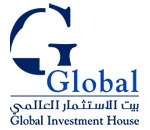 A new study entitled WebDialn@ (meaning ‘our web’ in the Arab Algerian accent) by Med&Com and Ideatic that polled about 6,000 Algerian internet users on ADSL, mobile internet, online advertising and e-commerce, estimates that 4.5 million people (12.8% of the Algerian population) use the internet, and that they heavily rely on it for news, research and activities such as social networking.
A new study entitled WebDialn@ (meaning ‘our web’ in the Arab Algerian accent) by Med&Com and Ideatic that polled about 6,000 Algerian internet users on ADSL, mobile internet, online advertising and e-commerce, estimates that 4.5 million people (12.8% of the Algerian population) use the internet, and that they heavily rely on it for news, research and activities such as social networking.
75% of Algerian internet users call the web an “indispensable tool”, with more than 90% confessing to “not being able to get by without going online ‘at least once a day'”. Most users reported spending two hours on average in front of their monitors.
The study also shows a gender gap and regional disparities in internet use. The typical Algerian Web user is described as male (72.2%), aged between 20 and 29 (29.2%), educated at least to the baccalaureate level + 1 (66.2%), and living in Algiers (29.28%). However, women represent just 25.8% of Algerian Web users.
The researchers reported that 82.6% of Web users communicate via email. Of this percentage, 42.5% also use instant messaging (such as MSN or Yahoo Messenger), 33.8% visit discussion forums, 33% make telephone calls over the Internet (Skype), and 9.9% use video conferencing.
Online media are the Algerian web users’ top online destinations, with 80.8% reading online newspapers, 19.9% listening to the radio, and 11.4% watching TV programmes. The internet is also used for research (80.7%) and making business contacts (22.9%). Social networks seem to be quite popular too with 40% of respondents having profiles on Facebook.
The study also shows that Algerians aren’t very active contributors, with 82.2% visiting online media-sharing sites (YouTube, DailyMotion, Flickr), but only 23.5% contributing.
Numbers from the Algerian Post and ICT Ministry say that there are 585,455 residential ADSL subscribers in the country. Nearly 65% of those surveyed said they can log on from home, compared with 24.6% who log on at work. Over 61% of web users say there are at least three people using the internet in a single home. Youth clubs and libraries with internet access, which used to be crammed, are hosting fewer users.
Some 72.1% of users say they are unsatisfied with the speed of their connection at home, and 79.7% complain about frequent service outages. 53.8% of Web users think the connection rates are affordable, while 43.8% of them think subscription rates are expensive or very expensive.
A presentation of the study results is available here in French: WebDialn@ Study Results (PDF)
[Source: Magharebia]




 Bahrain’s mobile penetration rate has the potential to reach 164 per cent by 2012, a penetration rate, which is already being reached in some European countries and in other parts of the Middle East.
Bahrain’s mobile penetration rate has the potential to reach 164 per cent by 2012, a penetration rate, which is already being reached in some European countries and in other parts of the Middle East. According to official numbers released by the Jordanian Telecommunications Regulatory Commission, the number of internet users in the kingdom reached 1.2 millions users at the end of the first half of 2008, which represents a penetration rate of more than 20.5% of the Jordanian population which currently stands at around 6 million.
According to official numbers released by the Jordanian Telecommunications Regulatory Commission, the number of internet users in the kingdom reached 1.2 millions users at the end of the first half of 2008, which represents a penetration rate of more than 20.5% of the Jordanian population which currently stands at around 6 million.